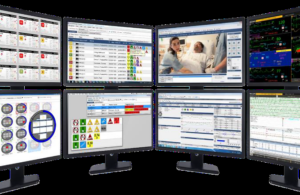Top 4 Challenges Of Physician Staffing In ICU
 Intensive Care Units (ICUs) in hospitals aim to provide an ideal setting to monitor and support critically ill patients. Ideally, an ICU includes adequate intensivist staffing complemented with a multidisciplinary ICU care team and state-of-the-art intensive care facility for faster recovery and shorter length of stay (LOS). It improves the probability of accurate and timely medical interventions, which is critical to reduce the mortality rate and increase the patient recovery rate in ICUs.
Intensive Care Units (ICUs) in hospitals aim to provide an ideal setting to monitor and support critically ill patients. Ideally, an ICU includes adequate intensivist staffing complemented with a multidisciplinary ICU care team and state-of-the-art intensive care facility for faster recovery and shorter length of stay (LOS). It improves the probability of accurate and timely medical interventions, which is critical to reduce the mortality rate and increase the patient recovery rate in ICUs.
According to JAMA Internal Medicine Journal, “More than 5.7 million patients are admitted annually to an intensive care unit (ICU) in the United States, accounting for approximately 20% of all acute care admissions”. However, there exists a huge imbalance in the nation-wide patient-intensivist ratio (PIR) which contributes towards delayed medical intervention, extended length of stay (LOS) and increased treatment costs for patients.
Here is a list of 4 prominent challenges in ICU Physician Staffing
- Intensivists Shortage
- Physician Burnout
- Physician Staffing Cost
- Non-ICU Intensivists
Intensivists Shortage
A remote, Tele-ICU unit, employing an intensivist-led multidisciplinary ICU care team can support timely diagnosis and treatment for patients in ICUs. Tele-ICU Intensivists are experienced in diagnosing the criticality of illnesses in patients based on access to far greater amounts of vital trend data which reduces dramatically ICU complications. They have specialized expertise in either one of the following disciplines such as anaesthesia critical care, critical care medicine, pediatric critical care, surgical critical care and pulmonary critical care to conduct medical or surgical therapies and improve the health outcomes of critically ill patients.
According to a research study, the actual intensivist shortage is about 5 to 10 times more pronounced than projected. Tele-ICU is the solution. The hospitals in the U.S face an acute shortage of full-time intensivists to provide 24/7 support to the intensive care units. A majority of certified intensivists are part-time ICU physicians who are unable to provide undivided attention towards patients, which could result in higher health complications and increased mortality rate in ICUs.

Source: https://www.ncbi.nlm.nih.gov/pmc/articles/PMC4396890/
Tele-ICU solutions like Intercept Telehealth support the timely mobilization of intensivist-led ICU teams and other multidisciplinary support services for hospitals. They help improve the efficiency of critical care facilities that execute shared protocols with other departments like emergency care and cardiac care in hospitals.
Physician Burnout
An increasing number of intensivists and Advanced Practice Providers (APPs) such as Nurse Practitioners (NPs) and Physician Assistants (PAs) in intensive care units are reporting severe burnout as compared to other specialties in hospitals. Healthcare organizations are faced with the challenge need to optimize their resources effectively and efficiently to provide better patient care.
In the Modern Healthcare journal, Dr.T.Glen Bouder, the Medical Director of Critical Care at Winchester Medical Center stated that the intensivists in the hospital more often doubled up as emergency physicians owing to a huge gap between the supply and demand for intensivist services. He also remarked that it led to increased physician burnout and decreased ICU support in the hospital.


Tele-ICUs leverages remote monitoring solutions like Intercept Telehealth to connect intensivists and multispecialty physicians from different locations to patients in ICUs 24/7. They help healthcare organizations to deliver advanced critical care for better health outcomes and faster recovery. Telemedicine can have a huge impact on the quality of healthcare in ICUs, especially in rural and remote parts of the country.
Physician Staffing Cost
The American College of Critical Care Medicine and the Leapfrog group advocate 24/7 intensivist-staffed ICUs since they promote overall economic benefits and patient outcomes in hospitals. However, an around-the-clock intensivist coverage incurred high ICU staffing costs for hospitals, though it proved to be more cost-effective for high acuity, high volume intensive care units. It results in hospitalists and general physicians manage intensive care units as opposed to certified intensivists who specialize in Critical Care Medicine (CCM). Telemedicine, especially Tele-ICU solutions like Intercept Telehealth can help reduce the ICU staffing cost in hospitals. A research study from Emory Critical Care Center stated that implementing Tele-ICU staffed with consultant intensivists and a dedicated critical care team resulted in a $4.6 million cost savings for the hospital. Hospitals can achieve better revenue returns through 24/7 remote monitoring for critically ill patients with a network of remote intensivists and a critical care team.
Non-ICU Intensivists
Intensivist-led rapid response teams are critical for both intensive care and non-intensive care patients. For instance, ICU physicians might be required in emergency departments during unprecedented situations. Likewise, a pulmonary-critical care medicine practitioner will have to travel to remote or rural hospitals which could be a part of a national healthcare organization. As a result, healthcare organizations need to optimize their existing network of intensivists and hospitalists for better workflow, patient satisfaction, and resource management.
Tele-ICUs can help patients and hospitals benefit from full-time intensivists whose consistent clinical practice delivers better health outcomes and revenue returns. They closely work with nurses, pharmacists, respiratory therapists and other physicians in hospitals on an ongoing basis based on clinical best practices and protocols. The hospitalists and intensivists need to develop a good rapport to reach a consensus in diagnosing and treating patients, efficiently.
In a nutshell, the quality of patient care in ICUs is measured based on length of stay, patient recovery, and mortality rate. Healthcare organizations need to address the shortage of intensivists, physician burnout in ICUs and cost barriers in ICU staffing to ensure better patient care in critical care units of varying capacities across the country. They need a comprehensive technology-enabled solution like Tele-ICU solutions to counter the current challenges in ICU staffing and provide future-ready healthcare services for patients.

